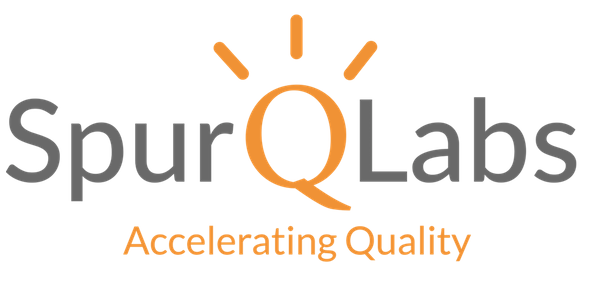
How to Automate tests using Taiko with Cucumber in JavaScript
Hello! In this blog, I will be exploring how to automate tests using Taiko with Cucumber in JavaScript. The Taiko tool is easy to automate and is very reliable, and it works faster to execute and run test cases. It is a user-friendly tool as well.
What is Takio?
A Taiko is an automation tool that is available for free and it is an open-source browser automation tool. It is built by the ThoughtWorks team. It uses the Node.js library to automate the chrome browser. Taiko is very useful to create maintainable and highly readable JavaScript tests.
Taiko Features:
The Taiko was explicitly built to test modern web applications.
The features of Taiko that set it apart from other browser automation solutions are listed below.
- Easy Installation
- Interactive Recorder
- Smart Selectors
- Handle XHR and dynamic content
- Request/Response stubbing and mocking
We can use Taiko on three platforms:
- Windows
- macOS
- Linux
How to install Taiko?
A Taiko is available on npm: You can use the following NPM command to install the taiko on your system.
npm install -g taikoWhat is cucumber?
A Cucumber is a testing tool that allows BDD. It offers a way to write tests that everyone, regardless of technical ability, can follow. Before developers build their code in BDD, users (business analysts, product owners) first write scenarios or acceptance tests that describe the system behavior from the perspective of the customer. Such scenarios and acceptance tests then are reviewed and approved by the product owners.
How to install Cucumber?
Basically, cucumber is available on npm: You can use the following NPM command to install the cucumber on your system.
npm install --save-dev @cucumber/cucumberGetting Started
We will be using Visual Studio code to write our test automation code in JavaScript. We will create a feature file first, then click on the left side of the panel and choose “new file” from the menu that appears. Give a file name after that, such as the Calculator. feature
I’ll start out by introducing the Taiko framework, which integrates BDD and Cucumber. You will be guided through the code in the next step.
Feature: Calculator operations
@smoke
Scenario: Addition of 2 numbers
Given I launch calculator application
When I click on number 2
And I click on operator +
And I click on number 2
Then I verify the result is 4I’ll describe how to automate the calculator page in this place. The code shown below builds calculator steps where we must import statements provided by cucumber before navigating to the support folder.
After that, we can import the cucumber and assertion statements and that will build a page where all the steps are generally placed.
Basically, this is the step definition file where we need to map the feature file steps and call methods declared in the page file.
After that, we have to import the page file in the step definition file. And we need to call the methods declared in the page file.
Following is the code snippet for the step definition file.
const { Given, When, Then } = require('@cucumber/cucumber')
const calculate = require('../../pages/calculatorPage')
Given('I launch calculator application', async function () {
await new calculate().launch()
})
When('I click on number {string}', async function (num) {
await new calculate().click_number(num)
})
When('I click on operator {string}', async function (num) {
await new calculate().click_operator(num)
})
Then('I verify the result is {string}', async function (num) {
await new calculate().verify_result(num)
})
Now let’s create a page(We are using Page Object Model (POM) structure here) file where we have to declare the class and all the methods cleaning in step definitions.
Following is the code snippet for the page file.
const { Before } = require('@cucumber/cucumber')
var { setDefaultTimeout } = require('@cucumber/cucumber')
setDefaultTimeout(60 * 1000)
const {
openBrowser,
goto,
write,
click,
$,
closeBrowser,
setConfig,
button,
waitFor,
} = require('taiko')
const assert = require('assert')
setConfig({ observeTime: 30000, retryTimeout: 30000, navigationTimeout: 30000 })
class calculate {
async launch() {
await openBrowser({ headless: false })
return goto('calculator.net')
}
async click_number(num) {
waitFor(5000)
await click($('span[onclick="r(' + num + ')"]'))
}
async click_operator(num) {
await click($(`span[onclick="r('` + num + `')"]`))
}
async verify_result(num) {
waitFor(5000)
assert.equal(await $('#sciOutPut').text(), num)
closeBrowser()
}
}
module.exports = calculate
And, In the above code snippet, methods contain actions like opening the browser, visiting a website, CSS selectors and actions to be performed on it (click), and Assertions. You may notice that we are doing open browser and close browser actions into this page file itself which is not the best practice. You can move it to Before/After hooks and create a nice framework. However, that is for a later blog 🙂
So, to execute the test case, you can run the following command from the terminal.
npx cucumber-js --publishHappy testing !!!

Conclusion:
We can automate tests using taiko with Cucumber with JavaScript very easily. Taiko is a very powerful tool and easy to implement. It will definitely compete with Selenium and Playwright in the coming years.
By profession an Automation Test Engineer, Having 3+year experience in Manual and automation testing. Having hands-on experience in Cypress with JavaScript, NodeJS. Designed automation web framework in Cypress, Webdriver.io, Selenium with jest in JavaScript. He loves to explore and learn new tools and technologies.
